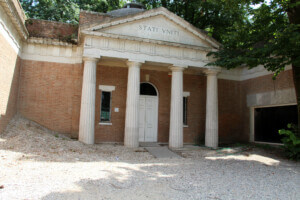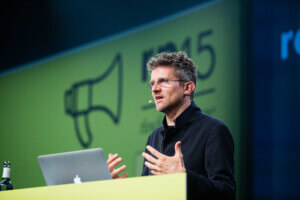AN just had a quick Arsenale walkthrough of Radical Pedagogies: ACTION-REACTION-INTERACTION by creator and Princeton professor Beatriz Colomina. The Arsenale has been given over in this biennale to Monditalia, a single-theme exhibition with exhibits, events, and theatrical productions engaging Italian architecture with politics, economics, religion, technology, and industry. In this installation the other festivals of la Biennale di Venezia—film, dance, theatre, and music—will be mobilized through the architecture event to contribute to a comprehensive portrait of the host country.
In Radical-Pedagogies, Colomina’s team (that includes Britt Eversole, Ignacio G. Galán, Evangelos Kotsioris, Anna-Maria Meister, Federica Vannucchi, Amunátegui Valdés Architects, and Smog.tv) has created a wondrous wall display of the effects of the radical years in Italy and as their influence spread around the world to architecture schools and movements on every content. The display is a wall of information that, rather than make definitive claims to all inclusiveness, uses an open-source strategy to feature what’s known so far about the these multiple international movements and that asks others to add their own information to the wall. The wall includes original journals, fantastic period images of major protagonists from Giancarlo de Carlo, Manfredo Tafuri, and many others. The display makes use of augmented reality that allows users with mobile devices to scan the display which then creates an interactive display of films, videos, images, and other displays. Its is a not-to-be-missed part of Monditalia in the biennale.










